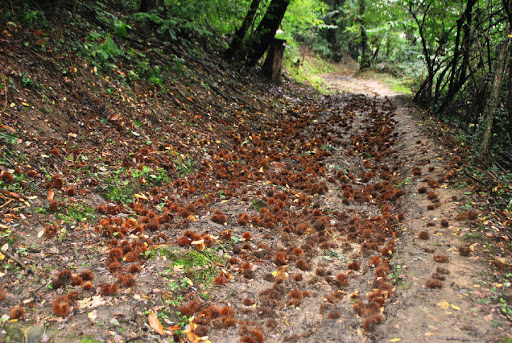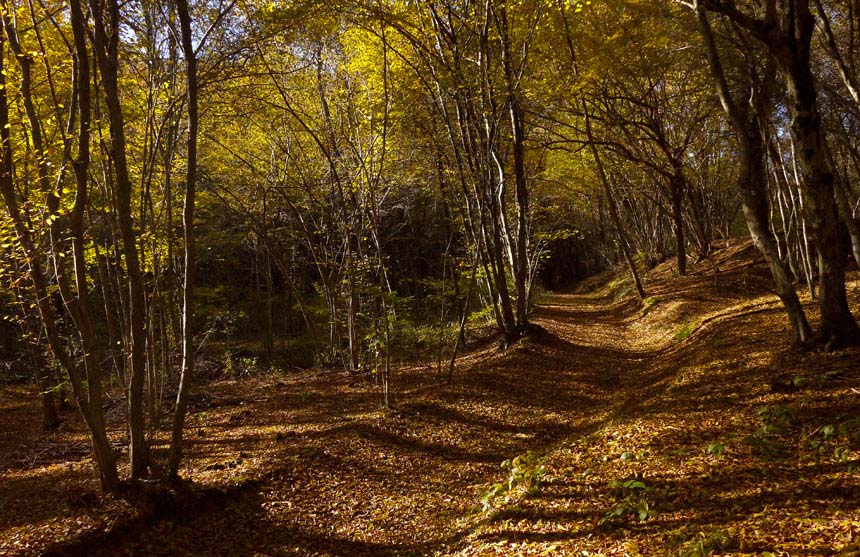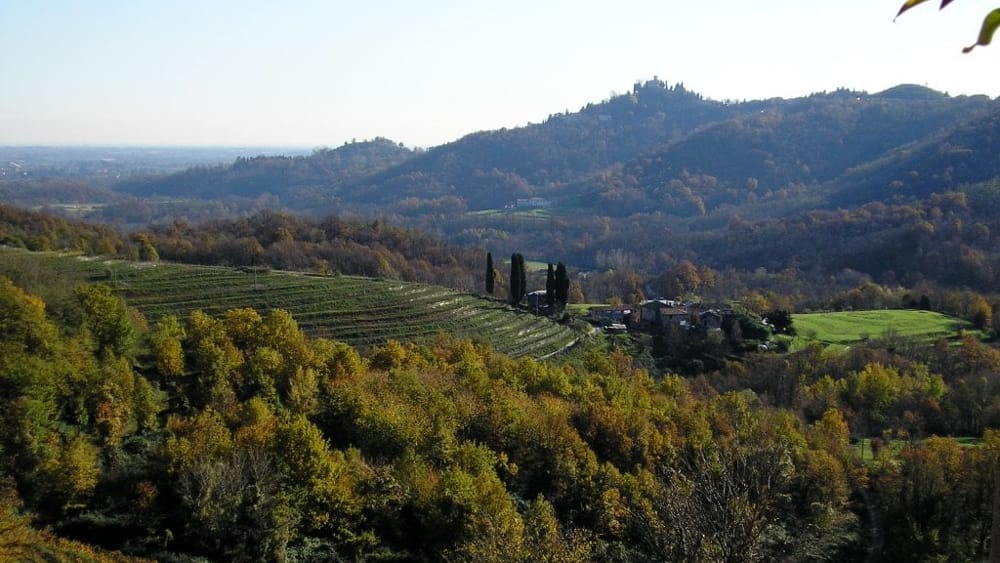
Regional Park of Montevecchia and Valle del Curone
This post is also available in:
 Italiano (Italian)
Italiano (Italian)
The Regional Park of Montevecchia and Valle del Curone is a protected natural area of Lombardy in the municipality of Merate (Brianza area of Lecco). It borders with the green boundaries of Brianza, in the area of Lecco, thickly scattered with agricultural and industrial sectors – these are the very last offshoots of Milan metropolitan area.
The park covers an area of about 6.774 acres and spreads over eleven Municipalities: Merate, Cernusco Lombardone, Lomagna, Missaglia, Montevecchia, Olgiate Molgora, Osnago, Perego, Rovagnate, Sirtori, and Viganò.
The Park is, therefore, not a secluded reserve, but a variegated area with many urban settlements, industrial production facilities, agriculture activities, and livestock farming – large architectural structures of artistic and cultural value are present as well.
The landscape, therefore, features cultivated terraces, grassy hills, woods, farmhouses, ancient churches, villages, and towns. The northern part of the park has a harsher aspect, with hilly reliefs and steeply-sloped valleys, including the Valle Santa Croce and Alta Valle del Curone Nature Reserve. Wooded areas are obviously quite abundant. In the hilly area of Montevecchia, which is mainly terraced, vineyards, nursery crops and cultivation of aromatic plants are extremely common. The southern area of the park is mostly flat and made by landslides and debris brought downstream by the melting waters of the glaciers – its crops are typically flat.
In the Nature Reserve, there are two streams vital for hydrology: the Curone and the Molgoretta, which run southbound throughout the park.
The woods
Most of the Park is covered by woods. The thick trees in Valle del Curone, Valle Santa Croce, and Viganò represent the last wooded areas of considerable size extruding from the pre-Alpine forests. These local woods are interrupted, to the north, only by roads and small settlements.
In the highest and sunniest areas, there are almost pure sessile oaks (Quercus petraea), downy oaks (Quercus pubescens), hornbeams (Ostrya carpinifolia), and ashes (Fraxinus ornus).
Towards the valley, there are oak and hornbeam woods, often populated by wild cherry trees (Prunus avium). In the northern area, there are extensive chestnut groves – mostly in poor condition due to “chestnut cancer” – but on the sunniest slopes, these very trees (Castanea sativa) alternates with sessile oaks (Quercus petraea).
In more humid areas, such as along the Curone Stream, there are white hornbeams (Carpinus betulus), black alders (Alnus glutinosa), more poplars (Populus alba), and London plane trees (Platanus sp. ), while in the Curone Valley – in an area with a cool and very wet microclimate – also beeches (Fagus sylvatica) can be found.
In the southern flat areas and in the lowest woods of the hill, exotic black locust (Robinia pseudoacacia) is the most prominent species.
Most of the woods in the park are privately owned, so many of them are used for timber.
Since the creation of the protected area, thorough management of the forest areas has been enforced, aiming at conservation and reconstitution of the vegetation, while thoroughly respecting the local environment.
In the Park, there is a network of trails (some 37 miles in total) winding mostly through the forest and well cared for by the Park Authority. The latter is always ready to credit some contribution to any associations or private citizens eager to commit themselves to the ordinary maintenance of these very trails.
The park features a Visitor Center (Cascina Butto), and a Park Center (Ca’ del Soldato) with a small museum. Volunteer guides are available at both facilities.
The complete on-line listing of the park flora, edited by Milena Villa (a volunteer Ecological Guard) is constantly updated with hundreds of cataloged species and available for consultation (Floristic Archive of the park).
Flora
Over 1000 herbaceous and woody species have been identified in the park, some of which very valuable. The full list is available online: http://www.parcocurone.it/ambiente/flora/specie.php
Following the indiscriminate harvesting carried out over the years and the continuous transformation of the land, some species are threatened of extinction and therefore subject to strict protection. The full list is available online: http://www.parcocurone.it/ambiente/flora/vietate.php
Fauna
In the park, there are 26 species of mammals, including 8 species of bats. Among the mammals there are foxes, the weasels, and martens; rodents include dormice, the voles, wood mice, and recently re-introduced squirrels. Among the insectivores, there are hedgehogs, moles, and shrews. Hares can be found as well.
Most of the local bird species are internationally protected; there are rare ones like Sardinian warblers, melodious warblers, common whitethroats, cirl buntings, and red-backed shrikes.
In the old woods, there are pied flycatchers, elegant hoopoes, hawfinches, short-toed treecreepers, and the Eurasian nuthatch. There are also diurnal birds of prey such as buzzards, honey buzzards, and hobbies; nocturnal birds include tawny owls, little owls, scops owls, and common owls.
Nine species of amphibians have been identified so far, including salamanders, toads, frogs, and the Lataste species (globally endangered); among the eight reptiles species lizards, green lizards, Aesculapian snakes, and Dice snakes are abundant.
This post is also available in:
 Italiano (Italian)
Italiano (Italian)
Contatti
Sede dell'Ente per la Gestione del Parco: Loc. Butto 1 - 23874 Montevecchia (LC)(LC)
Tel. +39 039 9930384
http://http://www.parcocurone.it
Altre info
Uffici sede amministrativa dal lunedì al venerdì, dalle 9,30 alle 12,30. Il Centro Visite, a Cascina Butto, dove si trovano le guide ecologiche volontarie, è aperto la domenica, orario invernale (ora solare): 14 - 17; orario estivo (ora legale) 14- 17:30 . Il Centro Parco, presso Cà del Soldato, dove vi sono altre guide ecologiche, è aperto la domenica, orario invernale (ora solare) 9-12: e 14-17; orario estivo (ora legale) 9-12,30 e 14-17,30 . Il museo presente è aperto con gli stessi orari anche il sabato.





